

Sangeeta Kilachand Couture strives to combine the luxury and decadence of Maharaja era, raw handicrafts, traditional treasures with contemporary design values and unmatched aesthetics, to create the most beautiful pieces that stand the test of time.


Exquisitely styled and intricately embroidered, ABHAS Is the traditional costume of the region of Kutch a district of Gujarat, and has a history that’s as colourful and exciting as the garment. In ancient times the women of Kutch wore the Abhas embellished with beautiful tye n dye designers, zari thread embroidery that was very minute and intricate in coloured silk or cotton thread with a combination of a variety of stitches. The world ABHA has been derived from ABA – a world commonly used in Middle Eastern countries, which means a top garment or a mantle.
The ABHAS, based on an age-old traditional cut and style, is a kalidar kurta without a slit on the sides, and dates back a century. The ensemble is the sum of three parts: the Abha, the Odhani and the ijar. The classic Abhas is a tye n dye work on the borders of the hem and the sleeve, a round medallion on the upper part of the sleeve, a yoke starting from the shoulder, both on the front and back making a typical geometrical form ending in large half stylised floral motif in the centre of the Abha. The material used for the Abhas were atlas of Gajji or a fine variety of Chinese silk The ancient Abha is a tribute to the women of Kutch whose mastery over needle craft is beyond compare. The odhani is a square with a tye n dye work that is arranged in a pattern quite different from the other Odhnis.The ijar or palazzo pants were made of plain Gajji or tye n dye fabric. The ljar borders are often embroidered to match the neck pattern of the Abha.

Lift your spirit like a blossomed flower with the exuberant attires which bring the best of you

Shimmering and exquisite marodi hand embroidered dupatta, patola, kurta, lehriya adding magnificence to your personality

Amplify your beautiful persona by embracing the most customised and choicest designs by Sangeeta Kilachand

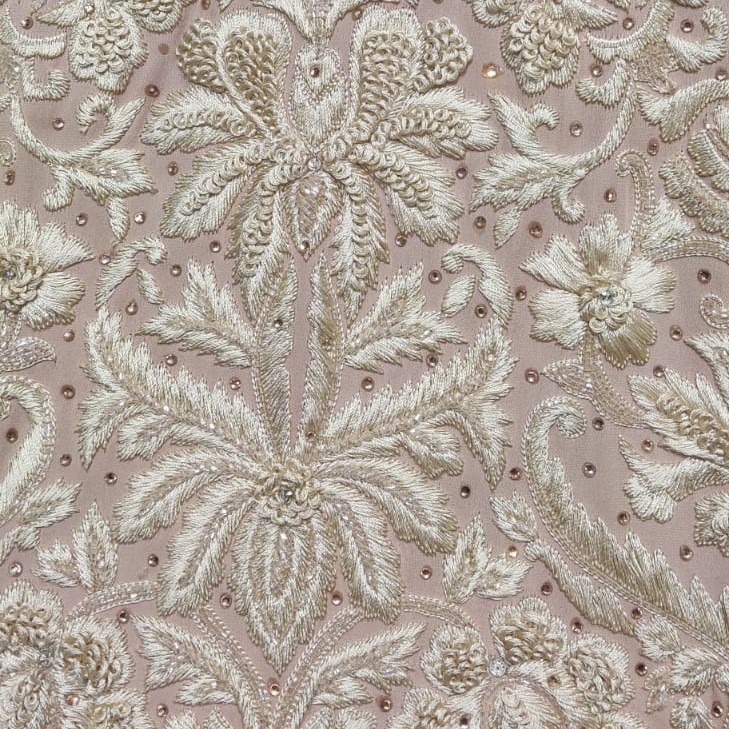
In Hindi, “EK TAAR” translates to “one wire.” This embroidery style lives up to its name by using a single metal thread. The key feature of this technique is the prominent visibility of the thread work, making it stand out more than other types of embroidery. Additionally, it is embellished with crystals, stones, and Swarovski for added appeal.
...
Gara a unique technique of thread fine embroidery of different satin threads mostly worn by the Parsi.
Gara is a distinctive thread embroidery technique primarily embraced by the Parsi community. Renowned as the ‘art of painting in threads,’ this exquisite embroidery showcases intricate depictions of beautiful birds, flowers, and motifs. Originating from a fusion of Chinese and Persian influences, Gara stands as a unique form of Indian embroidery.
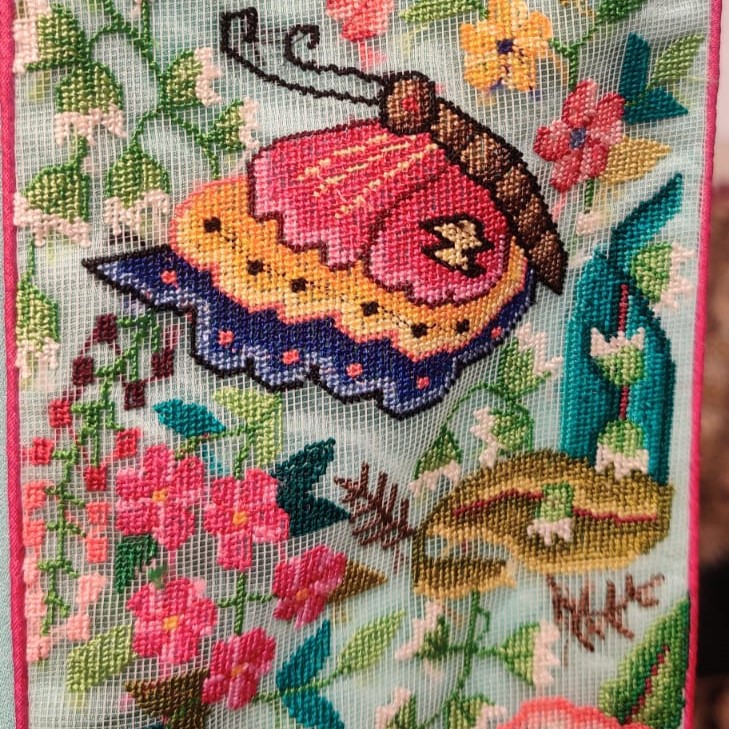
Petit point, a refined form of canvas embroidery akin to cross-stitch, exhibits an even greater level of finesse due to its small scale. The precision and uniformity of the forms’ outlines become less conspicuous when viewed at a typical distance. The thread is meticulously carried back from one stitch to another in a consistent manner, ensuring a uniform pull at the front. During the 17th and early 18th centuries, Petit point found widespread use in France.
...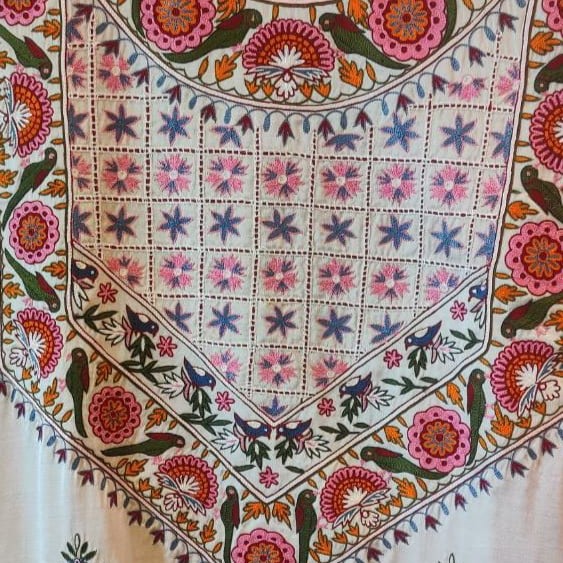
Mochikam embroidery, also referred to as Mochi Bharat, is an elaborate craft originating from Gujarat’s esteemed Mochi community. This intricate embroidery showcases delicate depictions of foliage, flora, and fauna, featuring peacocks, parrots, elephants, lions, and horses. The decorative borders are abundant with roses, lilies, and flowering trees, setting it apart from other embroideries. Notably, the verdant Trees of Life and Srinathji’s Pichwais that were used to hang behind deities in temples, were popular themes in this exquisite embroidery tradition.
...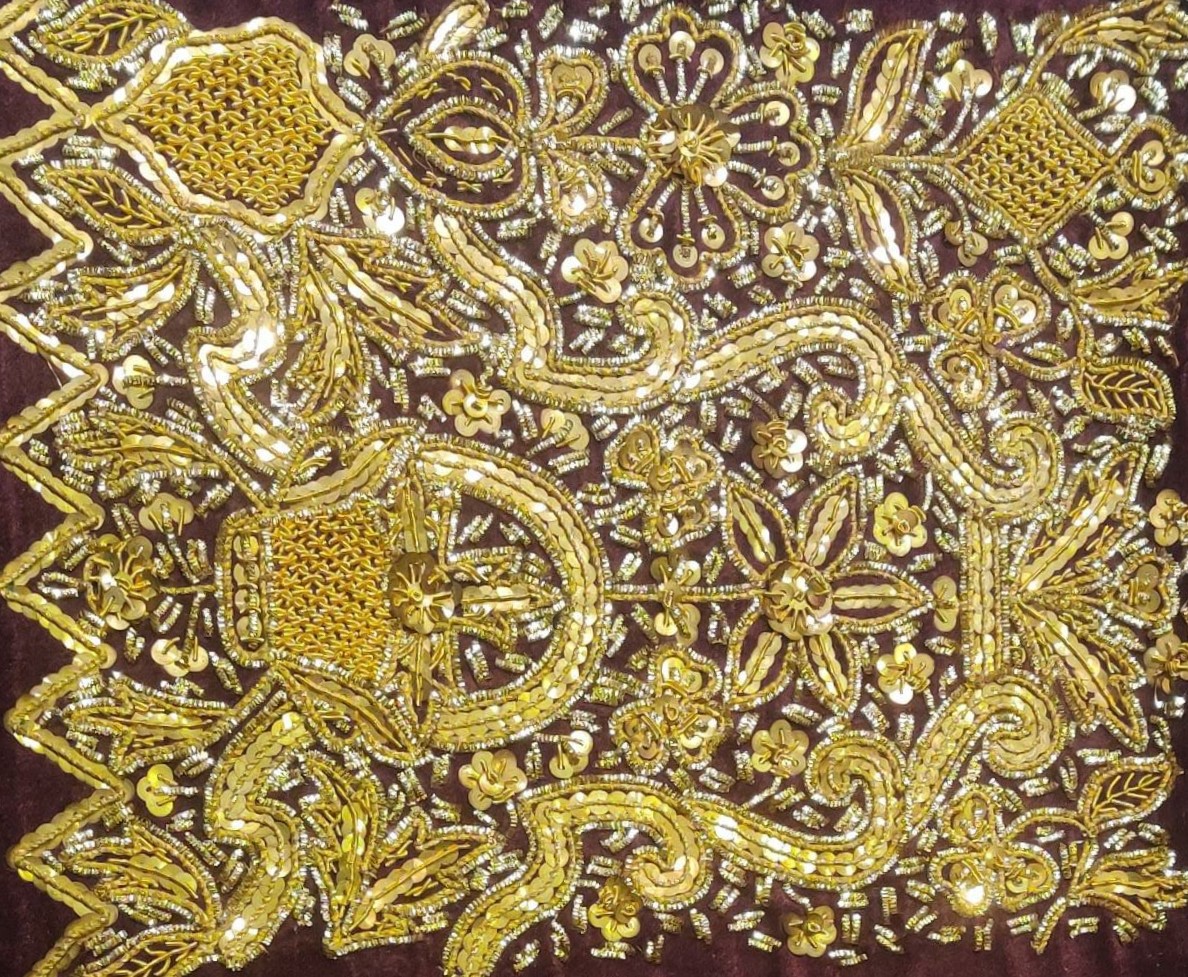
Zardozi, an embroidery style originating from Iran and the Indian Subcontinent, derives its name from two Persian words: “Zar” or “Zarin,” meaning ‘gold,’ and “Dozi,” meaning ‘sewing.’ This intricate art form involves heavy and elaborate metal embroidery on a silk, satin, or velvet fabric base. Typically, designs are crafted using gold or silver threads, complemented by the incorporation of pearls, beads, and precious stones. Zardozi serves as a lavish decoration for various items, including clothing and household textiles. While the traditional method involved the use of pure silver wires and real gold leaves, contemporary craftsmen often employ a combination of copper wire with a golden or silver polish, along with silk thread.
...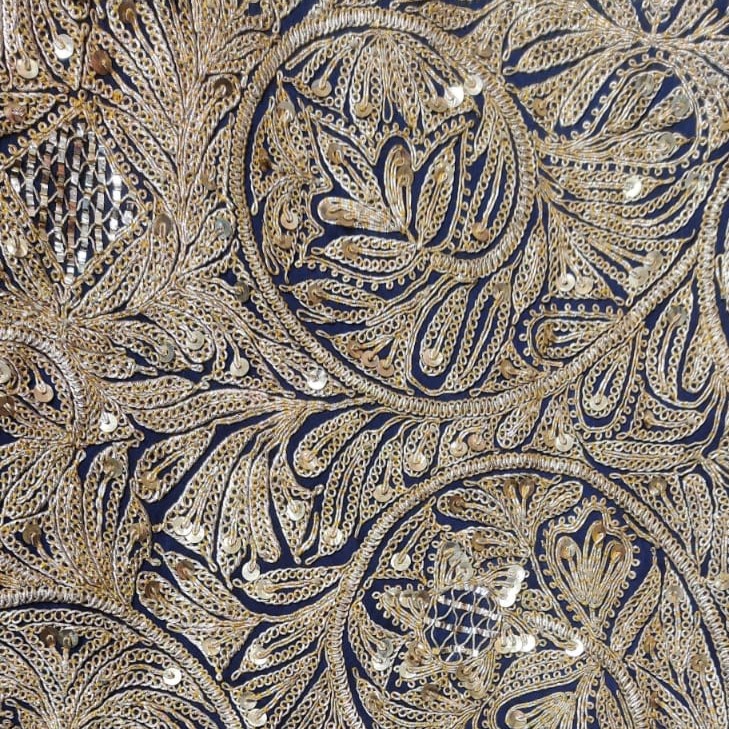
Marodi involves twisting threads to create yarn, and this twisted yarn is used for a special stitch that resembles a twisted loop. Initially designed for royalty, Marodi embroidery remains an exclusive and exquisite form of art. The process begins with drawing a design on butter paper and transferring it onto fabric. The fabric is then secured in a wooden frame, where multiple artisans work on it simultaneously.
...
Jashn is a celebration of empowered women who epitomise strength, confidence, and grace. These women seamlessly blend culture and tradition into their modern lives, portraying a harmonious intersection of heritage and contemporary flair. They are women of substance who are changing the world one day at a time. We at Sangeeta Kilachand Heritage Clothing recognise and acknowledge these women and through this campaign wish to celebrate them and in doing so encourage more women to be their true selves and achieve more and more.
Elisha Parekh is just 17 – but she is an entrepreneur specialising in hand-crafted desserts, as well as co-founder of Cakeify Mixes (@cakeifymixes), DIY dessert mixes made with the finest ingredients. What’s more, Elisha is also the creator and host of the podcast, Food From Here and There, on which she has interviewed some of the most well-known names in the F&B industry.
Alekha Advani is the founder of Way Well, a Wellness Lifestyle Management and Experiential company, headquartered in Mumbai. Alekha’s aim is to make the fragmented market of health and wellness offerings more accessible to everyone.
Carina Kohli is the founder of Humm Care, a healthtech startup for family building healthcare through fertility, family planning, pregnancy, postpartum, reintegration back to work and navigating early parenthood.
Avanne Dubash is a Consultant Prime Time Business Markets Anchor with ET NOW. She anchors the show ‘ The Market and Startup Central! She has hosted and moderated events like The India Economic Conclave, Digital India Awards and ET Red carpet.
Miti Jhunjhunwala, a mother of two, a passionate traveller, and a dedicated fashion enthusiast, is the visionary behind MJ Label.Recognizing a niche in the market for sustainable yet luxurious dinnerware, she founded MJ Label, which has achieved remarkable success in the premium home category.
Tanaz Doshi dons many hats – she manages the Walchand philanthropic ventures of running schools and the Walchandnagar township, is a consummate fashionista, a doting mother of two, curator of one of the city’s most well-attended shopping events, and a social powerhouse, all while exuding beauty and grace.